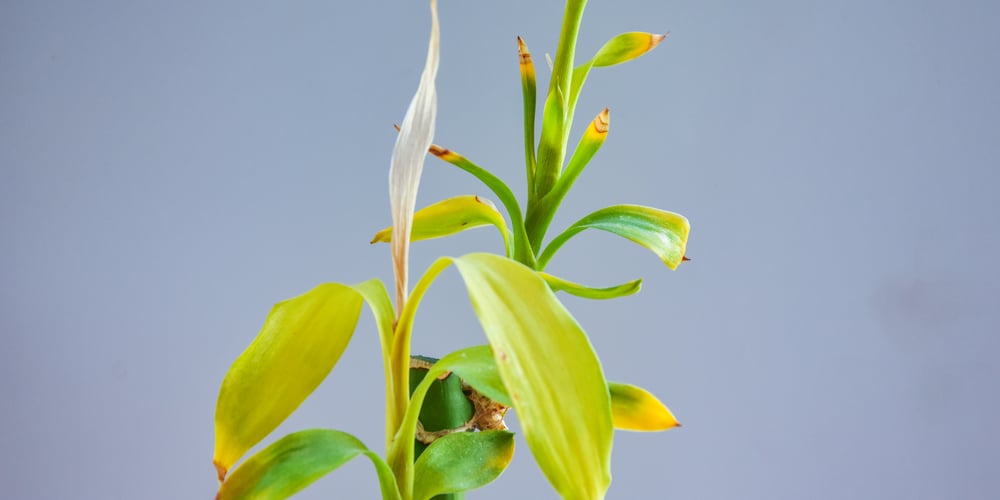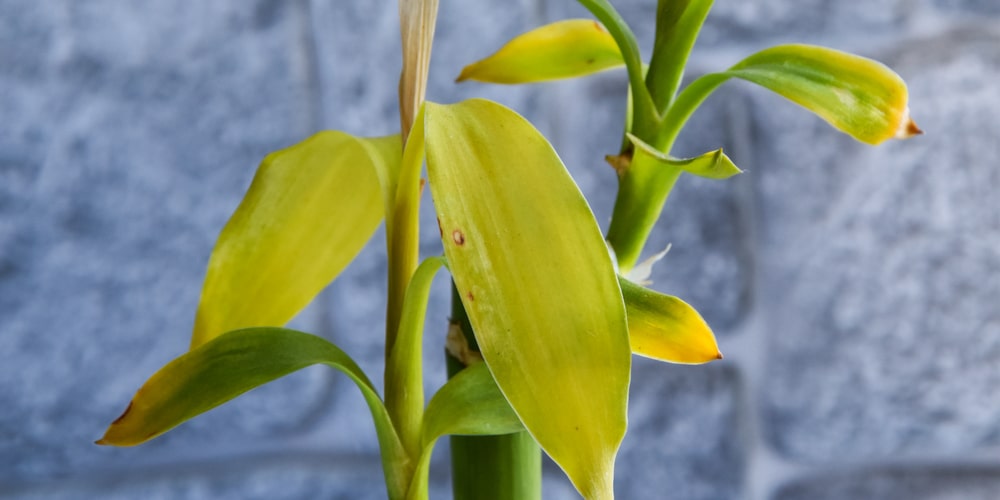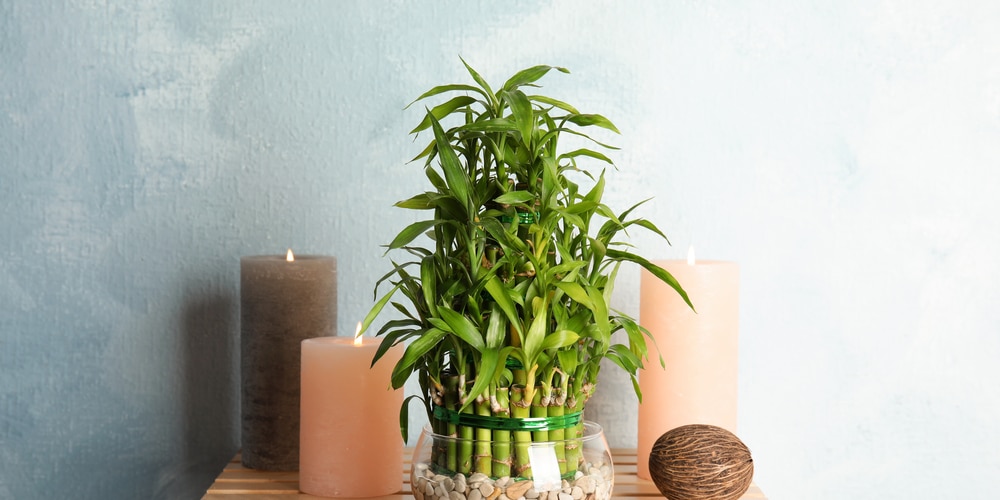Bamboo is said to be lucky and is commonly given as a housewarming gift. Lucky bamboo looks great and can help you manifest success, abundance, and happiness in your life, but only if the plant is well cared for. This article will tell you why your lucky bamboo is turning yellow, as well as what to do about it.
There are a few things you can do if your lucky bamboo starts to turn yellow. The most important thing is to figure out the cause of the yellowing and address it as soon as possible.
This article will look at some of the most common reasons your lucky bamboo is turning yellow. We’ll also give you some tips to help you solve the problem and restore your lucky bamboo to good health.
Lucky Bamboo Turning Yellow: Common Reasons

Lucky bamboo most commonly turns yellow due to over or underwatering, fertilization issues, incorrect soil pH, or lack of sunlight. Here are the most common reasons for your lucky bamboos leaves to become discolored.
Overwatering
One common cause of yellowing in lucky bamboo is over-watering. If your plant is in a pot without drainage holes, the soil may become waterlogged. Ensure that the pot has loose well-draining soil and drainage holes and is sitting in a dish or tray that will catch the water. You should only water your bamboo when the soil feels dry to the touch.
More commonly, lucky bamboo is kept in a glass jar or vase and is sitting in water. This is an effective way to grow lucky bamboo, but most people give their plants too much water. The water should only just be covering the roots of the plant. The bamboos stem shouldn’t be sitting in water as this could cause fungal infections or rotting to occur, which will affect your plant’s color.
Lack of sunlight
Another common reason for yellowing is the lack of light. Lucky bamboo needs bright, indirect light to thrive. If your plant is not getting enough light, it will start to turn yellow. If you’re not sure whether your lucky bamboo is getting enough light, try taking it to a brighter location for a week or two. When the leaves turn green again, you know that the plant was lacking adequate light before.
On the other hand, if your plant’s leaves have started to develop brown patches, it may be sunburn. Check that your plant hasn’t been left in the full sun, or its foliage may have started to turn yellow and brown. Lucky bamboo can die if it’s overexposed to the sun’s UV rays.
Humidity
Lucky bamboo plants are tropical in nature as they originate from tropical and subtropical areas in Asia. They, therefore, like high humidity that’s between 50 and 85%. Most people’s homes aren’t humid enough for tropical plants, but you can solve this problem by misting your plants regularly. You may also like to place your lucky bamboo in the kitchen or bathroom as these rooms naturally have the highest humidity in the home. Alternatively, group tropical plants, or invest in a humidifier if you have a larger collection of tropical plants.
What to do if your Lucky Bamboo Turns Yellow

If your lucky bamboo has been turning yellow because of improper watering, make sure you’re using a container with a drainage hole and water sparingly. If your plant is in soil, make sure the top two-thirds of the ground is dry before you water your bamboo again. The yellow leaves could also be caused by too much fertilizer. Don’t fertilize your lucky bamboo at all until it has been growing for six months.
If your plant is growing in water, you should change the water every couple of weeks and add some organic plant food that’s designed explicitly for bamboo. This will help your plant get the nutrients it requires to grow well.
If none of these solutions work for you, it’s possible that the yellow leaves are a symptom of a larger problem with your plant. Lucky bamboo is very sensitive to water and soil conditions, so if the soil is too acidic or basic, this could
cause yellowing as well. You can try and figure out if your soil is too acidic by conducting a pH test with universal indicator paper. If the results show that your soil is too acidic or basic, you can buy lucky bamboo fertilizer at almost any plant store and fertilize your plant every time you water it.
Getting rid of the Yellow Leaves

Unfortunately, when a lucky bamboo plant’s leaves start to turn yellow or brown, they are unlikely to regreen. The best thing to do is cut off any discolored leaves using a pair of scissors or a sharp knife that’s been sterilized.
This may ruin the look of your bamboo, but in time your plant will grow new leaves, especially if it’s well cared for. Ensure you provide your plant with regular fertilization to encourage new growth.
If the leaves of your lucky bamboo plant have turned yellow but the stem is still green and looks as if it’s in good condition, you can save the plant by removing damaged leaves. On the other hand, if the stem has started to get yellow, your plant may not survive. Yellowing of the stem indicates that the plant has started to die. You can attempt to revive it by getting the water, sunlight, and fertilization correct. If after a few weeks you see no improvement in the color of your plant, it may be passed saving.
Conclusion
Lucky bamboo is an easy plant to care for, but if you’re not careful, it can turn yellow and die. The most common reasons for this are over-watering or lack of light.
If your lucky bamboo turns yellow, carefully check the soil moisture with your finger or try moving your plant to a brighter location. You should also conduct a pH test on your soil to see if it’s too acidic or basic. If it is, you can buy lucky bamboo fertilizer at any plant store and fertilize your plant every time you water it.
Now that you know the most common reasons why your lucky bamboo may turn yellow, you can take better care of your plant to prevent it from dying.
Related: Azalea Turning Yellow